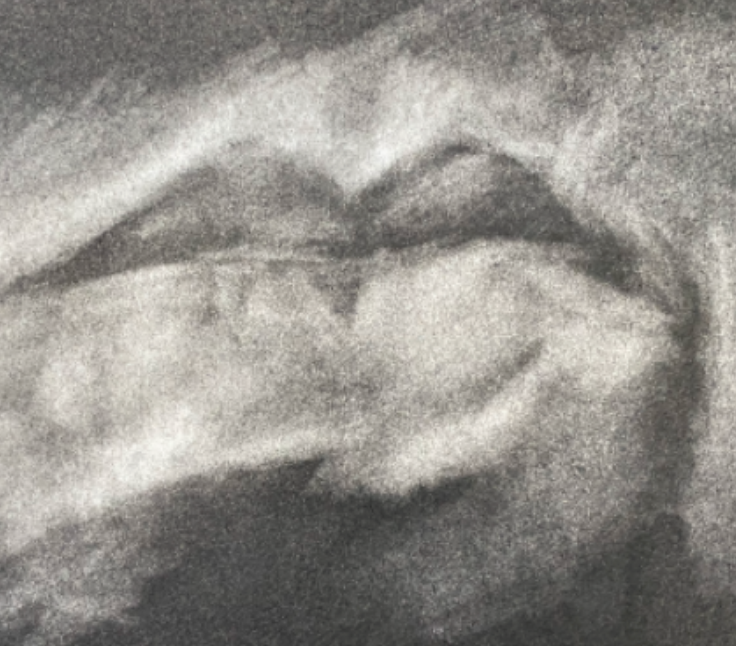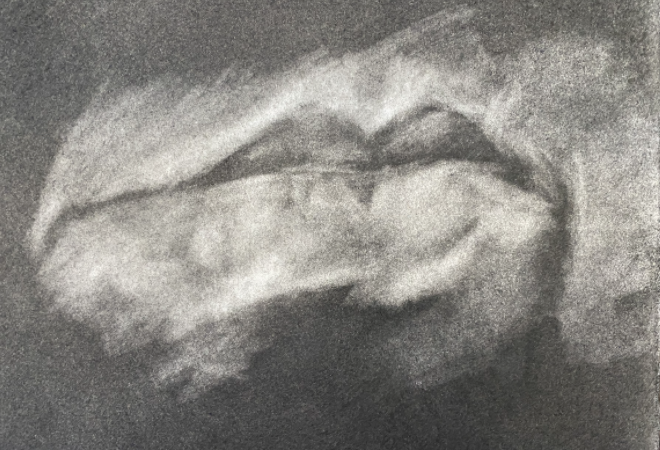
Producing Teaching: The Long Arc of a Short Semester
Fall semester 2020: the challenge? Produce a course that will be stimulating, filled with information and sustainable for hours of interaction for both student and teacher. How can we create a cohesive studio experience without sharing the physical experience? What becomes of materiality and the physical facility in an immaterial cybersphere?
Idea: produce a course experience that runs like a segmented virtual experience. Entertainment with purpose through the mundane and everyday exploration of materials and self. This happens in good TV–Schitt’s Creek for example.
Premise: 20 people looking for meaning from their parents’ house, mostly from a 12×13 screen in their childhood bedroom, often from a phone screen.
Action: weekly–a guided tour of how to see yourself through various materiials. Prompts and viewer interaction in the form of images and contributions toward a sophisticated language for how to talk about it.
Guise: select articles that show art language (what are the elements and principles of art?) in sophisticated and, yes, entertaining production videos, bolstered by academic readings with images. The power of the image, as shown through the moving image.
TED talks — the creative process (this example, Aimee Mullins, who has no legs, imagines the possibilities of various types of mobility vs. merely emulating walking (what if I were 10 feet tall? What if I could fly?); or this example, Marian Bantjes imaging typographic communication in the form of maceroni illuminated manuscripts, sugar script, and how surprising and pleasing christmas cards can be as valentines.
PBS series: ART21 — a view from the perspective of the artist from the artist’s studio. As in this episode, where Chinese dissident artist Ai Weiwei demonstrates the power of intellectually framing cultural icons to effect disruption in a governmental system
In other words, I can create a time based seemester as a production with a moral–the moral being what it means to have the powerful skill to read and create an image or object.
Action:
Stage one: Begin the work with a project that introduces a person to themselves and the class where they “picture” themselves anew:
“Metaphorical Me”
Begin with an image of self that is image based, and contains aspects of self that are aspirational, theoretical, and conceptual. ie “I am a dandelion” comes from a mind mapping exercise where I uncover, discover and recover aspects of myself that are not visible to others in my physical visage, but that are very much a part of me. From the map: wisdome, exuberance, sharing become words that I can represent through the life of a dandelion–a common “weed”, ebulliently yellow, prolific, then fragile, then spreading, then regenerating, or creating a million more dandelions.

Through the course of the class, create other ways of approaching and seeing aesthetics. What is line (a constructed idea) vs form (a more physical representation)? What is an interpretation in photography? What makes a “good” drawing? How is one’s head and hand (and heart) engaged when one is making, weather through a machine or a pencil or a cut paper or a lens?
Experiential work in playing with materials. Groups that combine and discuss these materials. Explain to each other and a discussion board how this seems to you. Empower yourself through seeing and listening and making with the tools for interpreting material, approaches and art language.
End the semester with a close up rendered image of “you” in a way that dulls the judmental senses. You can’t judge it or fix it, you must simply draw what is in front of you. (This is a quietly feminist work–the exercise is so demanding in observational accuracy that the student must move beyond the topical and familiar judgement of how they see themselves).

And the ultimate story is the final “exam” in the form of a pechakucha: tell the story of the semester to me through your experience. The full exercise below: (samples to follow after exams are over)
Pechakucha THE FINAL ‘EXAM’
format: power point with audio, video or other animated form that is time based.
images: 15-20 slides
Time: no longer than 2 minutes
DUE: 5 PM DECEMBER 6
suggested: 15 slides; 15 seconds/slide [you may vary this format as needed. Images should be your own created during this class, or your own work for the final based on materials, skills, concepts learned in class.
history of PechaKucha:
CHIT CHAT
From Wikipedia, the free encyclopedia
PechaKucha): ぺちゃくちゃ, IPA: chit-chat) is a storytelling format, where a presenter shows 20 slides for 20 seconds of commentary each (6 minutes and 40 seconds total). At a PechaKucha Night, individuals gather at a venue to share personal presentations about their work. The PechaKucha format can be used, for example, in business presentations to clients or staff, as well as in education settings.
Inspired by their desire to “talk less, show more,” Astrid Klein and Mark Dytham of Tokyo‘s Klein-Dytham Architecture (KDa) created PechaKucha in February 2003. It was a way to attract people to SuperDeluxe, their experimental event space in Roppongi, and to enable young designers to meet, show their work, and exchange ideas in 6 minutes 40 seconds
For your final in Art 160, prepare a pechakucha style presentation.
You may have noticed that the projects in the course have followed a particular story line. Consider the whole (the gestalt, if you will–get it?) as you create your final project. You have a choice of selecting two ways to express what you’ve learned in the class through slides based in your own work from the class. You may choose to use artifacts from across the course of the semester (trees/value; blind contour/line; erasure/direct observation) or you may select a single projet (ie erasure drawing or tree project) to demonstrate major concepts, skill and materials.
1. Represent major skills and concepts of the semeter
OR
2. Represent one project that you go into thoroughly
CONTENT:
Consider this presentation a mini show on skills you’ve been introduced to, how you’ve used them, and their potential. This is a summary of your semester that will answer the three questions. These are questions you’ve been addressing in your process logs: what did I learn? How does it fit into the theme of the course? What can I do with it?
You can use screen shots, photographs and images from assignments you worked on over the semester, OR YOU CAN CREATE and entirely new set of images, but your 15 images must demonstrate what you now know about Visual Thinking through 15 instances, and about 2 minutes.
Consider ways to effectively augment your visuals that are not just descriptive. DO NOT BE BORING.
How can you illustrate what you know with sound? Consider what might be an interesting and informative presentation.
This is not your normal powerpoint, although you can use powerpoint if you want to.
(Links to an external site.)
(Links to an external site.) (Links to an external site.)
side notes:
ten pretty awesome things you can do with powerpoint. (Links to an external site.) (Links to an external site.)
David Byrne uses powerpoint as an art form (Talking Heads) (Links to an external site.) (Links to an external site.)
YOUR TASK:
Show what you know about elements and principles, Form, Meaning, direct ovservation, occupied/unoccupied space, WordPress,
The elements and principles of design / readings {Practices of looking} / videos/links to experts that you watched and were affected by / outside connections you made / presentation formats / working with peer critique and input / what images can do / peer support / your working environment / look at the course objectives / your approach to design problem solving
This is considered your final assignment AND your final process “summative” process log